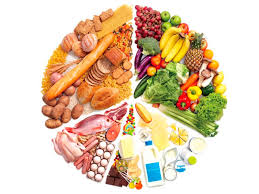Stamp: Wedding Emojis x3 Cake Spoon Cake (France 2019)
Wedding Emojis x3 Cake Spoon Cake (France 2019)
01 January (France ) within release MonTimbrEnLigne. Emojis goes into circulation Stamp Wedding Emojis x3 Cake Spoon Cake face value Lettre No Face Value
| Stamp Wedding Emojis x3 Cake Spoon Cake in catalogues | |
|---|---|
| Colnect codes: | Col: FR-TIM 2019-343 |
Stamp is square format.
Also in the issue MonTimbrEnLigne. Emojis:
- Stamp - Happy Emoji face value Prioritaire;
- Stamp - I have fallen in love with you. J'en pince pour toi face value Lettre;
- Stamp - I like it when you smile. J'aime quand tu souris face value Lettre;
- Stamp - Wedding Emojis x3 Bride Boquet Ring face value Lettre;
- Stamp - Wedding Emojis x3 Bride Ring Groom face value Lettre;
- Stamp - Wedding Emojis x3 Cake Spoon Cake face value Lettre;
- Stamp - Wedding Emojis x3 Church Bride Groom face value Lettre;
- Stamp - Wedding Emojis x3 Envelop sealed with a heart, List, Cake face value Lettre;
- Stamp - Wedding Emojis x5 Bride Bouquet Bridesmaids face value Lettre;
- Stamp - You make me see life in pink. Tu me fais voir la vie en rose face value Lettre;
- Stamp - Loving Cat Emoji wih heart eyes face value Lettre;
- Stamp - Smiling face with heart shaped eyes emoji face value Lettre;
- Stamp - Happy Emoji in Black, shaded face face value Lettre;
- Stamp - Hear no evil, see no evil, speak no evil Cat Emojis. black face value Lettre;
- Stamp - Cool Summer Emoji in black face value Lettre;
- Stamp - Four Bear Emojis in black face value Lettre;
- Stamp - Zipper Mouth Face Emoji. To keep a secret face value Lettre;
- Stamp - France Football Emoji in black face value Prioritaire;
|
Data entry completed
46%
|
|
|---|---|
| Stamp Wedding Emojis x3 Cake Spoon Cake in digits | |
| Country: | France |
| Date: | 2019-01-01 |
| Emission: | Personalized - Official |
| Format: | Stamp |
| Face Value: | Lettre No Face Value |
Stamp Wedding Emojis x3 Cake Spoon Cake it reflects the thematic directions:
A cartoon is a type of visual art that is typically drawn, frequently animated, in an unrealistic or semi-realistic style. The specific meaning has evolved, but the modern usage usually refers to either: an image or series of images intended for satire, caricature, or humor; or a motion picture that relies on a sequence of illustrations for its animation. Someone who creates cartoons in the first sense is called a cartoonist, and in the second sense they are usually called an animator.
The concept originated in the Middle Ages, and first described a preparatory drawing for a piece of art, such as a painting, fresco, tapestry, or stained glass window. In the 19th century, beginning in Punch magazine in 1843, cartoon came to refer – ironically at first – to humorous artworks in magazines and newspapers. Then it also was used for political cartoons and comic strips. When the medium developed, in the early 20th century, it began to refer to animated films that resembled print cartoons.
Food is any substance consumed by an organism for nutritional support. Food is usually of plant, animal, or fungal origin and contains essential nutrients such as carbohydrates, fats, proteins, vitamins, or minerals. The substance is ingested by an organism and assimilated by the organism's cells to provide energy, maintain life, or stimulate growth. Different species of animals have different feeding behaviours that satisfy the needs of their metabolisms and have evolved to fill a specific ecological niche within specific geographical contexts.
Tableware items are the dishware and utensils used for setting a table, serving food, and dining. The term includes cutlery, glassware, serving dishes, serving utensils, and other items used for practical as well as decorative purposes.The quality, nature, variety and number of objects varies according to culture, religion, number of diners, cuisine and occasion. For example, Middle Eastern, Indian or Polynesian food culture and cuisine sometimes limits tableware to serving dishes, using bread or leaves as individual plates, and not infrequently without use of cutlery. Special occasions are usually reflected in higher quality tableware



